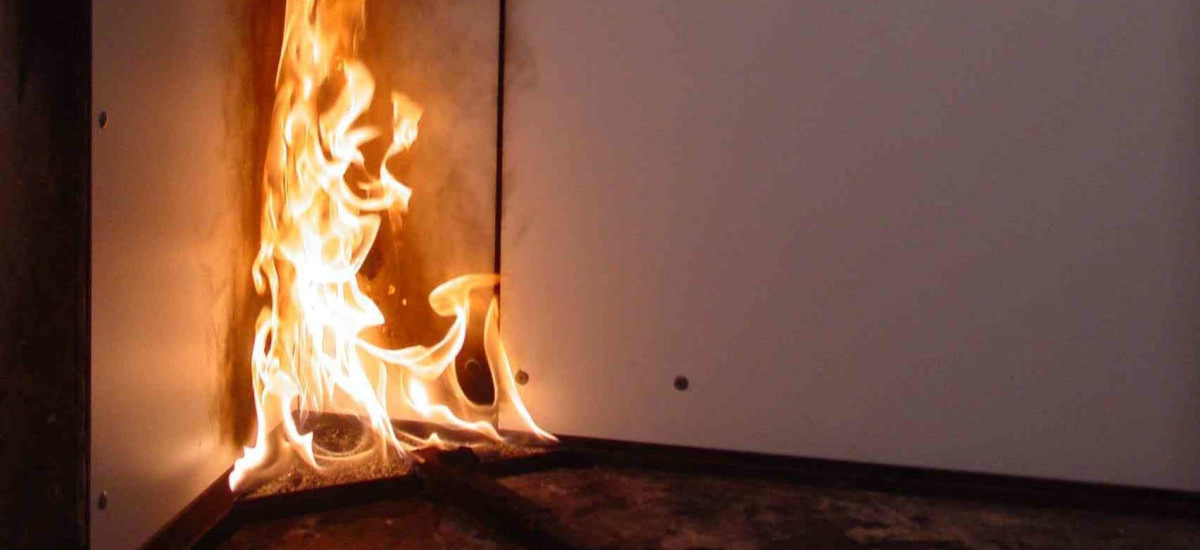18/1/2021
Efectis is involved in the preparation of new standards issued by CEN in Brussels. In recent years we have worked hard to realize new test standards and to improve present ones.
Several new test standards were implemented in 2020. The first one is the ignitability test standard EN ISO 11925-2. This is the standard for the small-flame test, part of the EN ISO 13501-1 to realize a class E or better. Surface and edge impingement tests are needed for this test. Additionally, a side impingement test is required for extra product layers and a thickness greater than 10 mm.
The most important difference from the previous version is the modification of the side impingement: under the new standard only product layers with a thickness (d) greater than 3 mm have to be tested. Under the previous standard, each visible layer had to be tested. The only exception is that glue layers have to be tested as well (as indicated in the figure below). Due to this modification the test is less severe for some products.
The second difference is the modification of the Single Burning Item (SBI) standard. The new standard has several new aspects: the most significant difference and most important improvement is the new smoke correction method. In the previous standard there was an option to realize a smoke correction afterwards the test was performed. For those who are not familiar with all the ins and outs of the SBI test, it is important to know that the preliminary burner (upper one) produces a little bit more smoke than the main burner (in the bottom corner). Consequently, frequent smoke correction tests have to be performed. The new standard specifies a different solution. From now on, a daily correction is implemented which gives a correction not only for the TSP600 but also for the SMOGRA. The new option is completely integrated in a new software version.
A second major change is that the pressure difference probe in the measurement section for calculating the flow is now a hemispheric probe rather than a BDP probe (bi-directional). The new probe gives a higher accuracy with less deviation in the flow measurement, resulting in less noise (see graphs below) and more precise HHR (Heat Release Rates).
To identify the aspects of accuracy of the modifications an extensive program was organized by Eric Guillaume in mid-2020.The results are described in a Round Robin report “Single Burning Item velocity probe”, which was distributed in June to all Efectis lab participants including Afiti in Spain, which was also a participant.
The final major change is that new tests can be started with a temperature difference of 6°C between the ambient and measurement section, thereby shortening the waiting time between two tests.
There are a few minor changes which result in extra tests and a different field of application in the classification reports, such as limiting the gap behind the specimen. In the new standard, gap sizes below 40 mm must also be tested if they are part of an end-use situation.
Contact: Arjo Lock – arjo.lock@efectis.com

